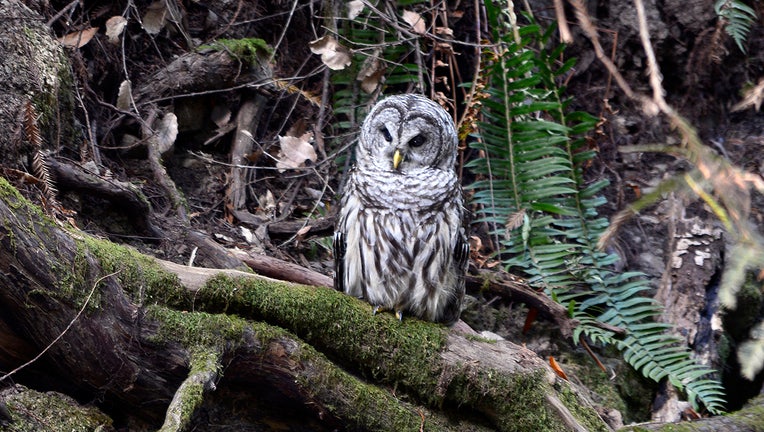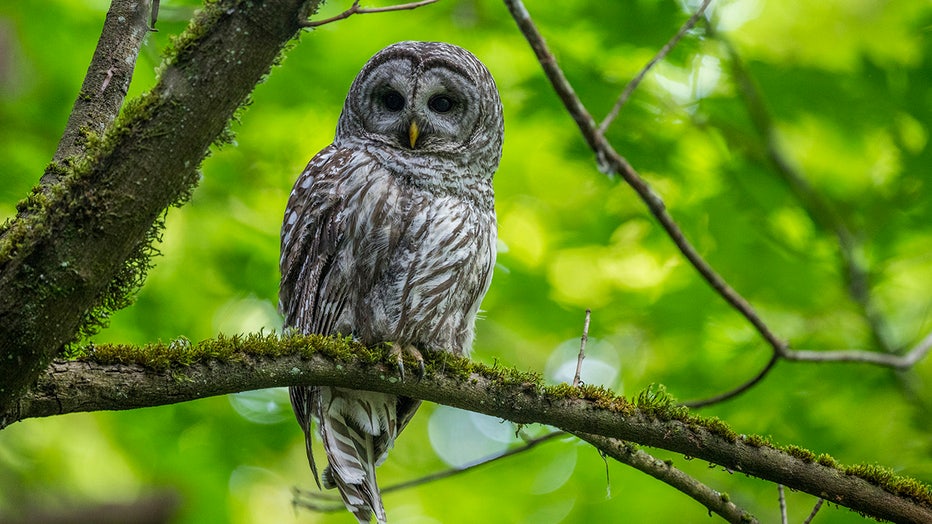Officials plan to kill hundreds of thousands of owls – to save other owls

File: A northern spotted owl watches for prey beside a small stream in Muir Woods National Monument north of San Francisco, California in September of 2018. (Photo by Robert Alexander/Getty Images)
To prevent the extinction of the threatened spotted owl species, the U.S. Fish and Wildlife Service plans to kill thousands of invasive barred owls across forests in the western U.S.
The plan, released Wednesday, is seen as a necessary evil by some conservationists, but a potentially destructive gamble by others.
How did we get here?
Barred owls, which traditionally lived in the eastern U.S., have encroached on the habitats of the northern and California spotted owls in Oregon, Washington, and California.
The barred owls are larger, breed more prolifically, and require less space – outcompeting the native spotted owls for resources.
Previous efforts to protect spotted owls led to fierce disputes over logging. And although the measures helped to slow the decline of the spotted owl population, the invasion of barred owls presents a new threat.
How will it work?
Starting next spring, barred owls would be attracted by recordings of owl calls, then be shot with shotguns and buried on site.
Agency documents obtained by the Associated Press show up to about 450,000 barred owls would be killed over three decades. The killings would reduce North American barred owl numbers by less than 1% annually, officials said.
Public hunting of barred owls wouldn't be allowed; they, too, are federally protected. Instead, the wildlife service would designate government agencies, landowners, American Indian tribes or private companies to carry out the killings.

File: A barred owl (Strix varia), also known as the northern barred owl, or striped owl, perched in a tree in a park in Kirkland, Washington State on May 27, 2024. (Photo by Wolfgang Kaehler/LightRocket via Getty Images)
Controversy over the plan
The approach to kill barred owls has generated mixed reactions in the conservation community. Organizations like the American Bird Conservancy advocate for the strategy as a necessary evil.
Others, like Wayne Pacelle of Animal Wellness Action, criticize the focus on lethal removal instead of habitat conservation.
"The Fish and Wildlife Service is turning from protector of wildlife to persecutor of wildlife," he told the AP.
Still other opponents fear that the intervention could disturb natural forest ecosystems or potentially lead to accidental shootings of spotted owls.
What’s next?
The upcoming publication of a final environmental impact study on the barred owl plan will open up a 30-day period for public commentary. This phase is crucial before any definitive decisions are taken regarding the proposal.
Matthew Brown of the Associated Press contributed to this report.

